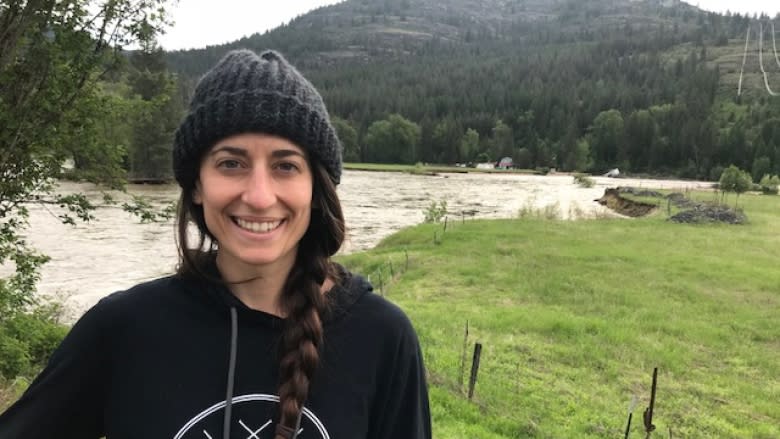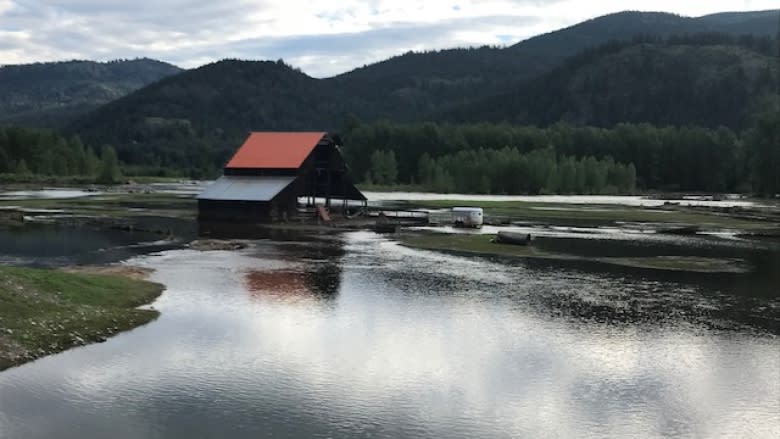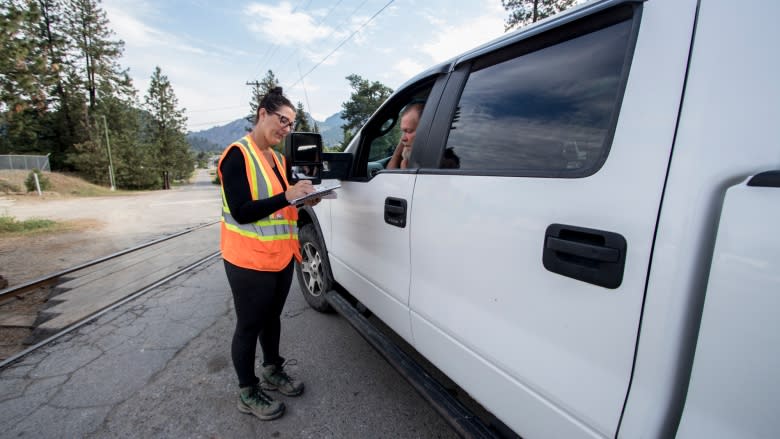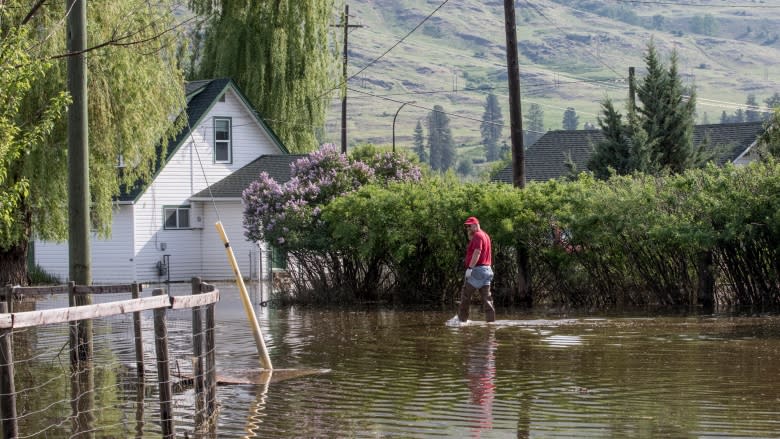After days away, officials to decide if Grand Forks, B.C., homes are livable
Two weeks ago, there was a road connecting Nicole Heppner's property to her neighbour's homestead just outside Grand Forks, B.C.
The Granby river was still within its banks then.
Now, Heppner's home is surrounded by murky water from the overflowing river. Her neighbours live on a new island with no access.
"The whole road is probably under about 12 to 15 feet [4-5 metres] of water," Heppner said.
It's the kind of situation emergency officials in the Kootenay Boundary region — and many other areas of the province — have been dealing with since historic flooding began earlier this spring.
Around 3,000 homes and businesses in the region are still a no-go zone, including most of downtown Grand Forks.
On Saturday, the focus is getting evacuees back home.
Nearly 50 people have been trained to rapidly assess the damage to buildings, coding them either red, yellow or green.
Bill White helped get those teams ready. He said they'll spend about half an hour in each structure to decide if they're livable.
"It's really a look at buildings from the perspective of a life," he said.
"What has the water done to the house? What are the impacts? What has changed for the family that lives there?" he continued. "And, the issue is, is it safe for them to live there?"
Select residents in Grand Forks' Ruckle neighbourhood were allowed back home briefly Thursday to collect valuables and lay down more sandbags.
The area, just off downtown Grand Forks, is one of the city's hardest-hit. A blend of river water and sewage swamped more than 100 homes.
Many were anxious to get home after days away, but the damage was overwhelming.
"It's messy, scary," said resident Anne Byers.
"There are piles of crap all over the place, and it's starting to stink."
Others said their homes were coated with mud from floor to ceiling. Cupboards were so swollen with water, they couldn't be pried open.
Frances Maika, communications officer with the Kootenay Boundary Regional District, said inspectors are starting with the least-damaged areas on Saturday.
In all, they'd have about 600 homes to get through.
She said rivers in the region are expected to crest one more time over the weekend before a long-awaited reprieve.
This week, hundreds of Canadian Armed Forces members were deployed to help B.C. communities overwhelmed by the floodwaters after the province asked for federal help.
Around 4,500 people have been forced out of their homes across the province this flood season. Another 7,000 are under evacuation alert, keeping a close eye on the weather.
Several rivers in the Interior are expected to peak over the weekend, bringing a second round of flooding to many already swamped communities.
Okanagan Lake is expected to rise, once again, to the record levels seen during last year's widespread floods.






